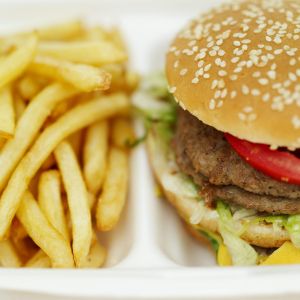
A fast food outlet is a licence to print money, right? Well, no. As Sarah Stowe discovers, keeping tight controls on the costs is essential to achieve a profit-making business.
Australians love their fast food and with most of the top brands franchising their outlets across the country, there are opportunities to cash in on the taste for food-on-the-go. Flipping a burger has traditionally been a great way for youngsters to start work because the systems in many franchised fast food chains are rigorous and provide good learning environments for keen entrepreneurs.
And it is the rigour of the business model that helps keep franchisees on track when it comes to making money.
There are a number of elements that contribute to the profit and loss of a fast food business, with rent and franchise fees sitting at the top of the list as fixed costs.
Bert Cotte, national franchise manager for McDonald’s Australia explains the franchise agreement for the McDonald’s business is 20 years.
“This allows the franchisee to plan the growth of their business with a clear understanding of what the rental or leasing cost will be over this period,” he says.
Operating costs include the costs of goods (COGs), wastage, wages, and sales revenue and these elements offer franchisees flexibility in managing the costs.
Cotte says “Costs are creeping up and they are unlikely to fall, communications and energy costs are rising, you’ll get business insurance costs rising. So how do you stay ahead of the game?”
At McDonald’s having access to data is a huge advantage as it allows franchisees to compare their business performance, whether that’s year on year sales in their own store, other local store performance or figures from across the state.
“What do you do then to put a plan of action into place? We’ve got a best practices book, gathered from really good units around the country,” explains Cotte. “We look at census data, the product mix, analyse and share best practice.”
He advises franchisees to have a regularly updated business plan as a living document that shows profit goals and customer service plans.
“It’s a trigger, and the franchisor should be the person to keep people honest to their business plan,” he says.
Cost of goods
A clear benefit of being in a franchise network is the ability of the franchisor to conduct deals on the supply of goods. Fred Pose is the franchise development manager at the fast food chicken chain Oporto. “We control all of the negotiations with suppliers, so we get a really good price,” he says.
“So it’s up to the franchisee and how they translate it to use in store. We know what the gross profit should be and franchisees are not allowed to buy from other suppliers.”
Phil Colburn, the Red Rock Noodle Bar franchisor, says while franchisees don’t have much control of food costs they get the best price. “We work to have a good rapport with suppliers and don’t get caught up with the big boys,” he says.
As an example, he explains that Red Rock Noodle Bar has secured a stable price for two years on key products– noodles, meat, seafood and packaging. Vegetables are subject to more seasonal prices.
“What is normally a $20 box of broccoli, this week is $60. So we’ve added more vegetables to our menu to expand the choice for the franchisor from 10 to 14 to allow for seasonal costings.”
The focus is on maximising the franchisees’ profit so a franchisee orders direct and pays the same price as a company owned store manager.
But making money out of serving quick meals is more than benefiting from negotiated supply costs. Getting the purchase orders right, and monitoring delivery and wastage are essentials to keep finances in check. It’s particularly important with fresh food, as Pose suggests.
“We’re dealing in fresh produce so if you over-order it goes off and you have to throw it away. You need to ensure staff are checking deliveries, you don’t want to lose a box of chicken fillets.
“This is a very high cashflow business, you need to be looking after the costs. You need to be diligent because one percent difference in food costs is taking money off the bottom line. If franchisees are not managing food wastage and labour costs, it’s two percent off the bottom line.”
There’s also a big opportunity around portion control, suggests Cotte. For instance, adding more lettuce to a burger isn’t necessarily better for the customer, the lettuce falls off the meat. He insists it’s important to engage staff in understanding portion control. Each menu item and raw product has sales and yield data so keeping an inventory and accurate measurement of wastage is important.
“Every month at Oporto we expect profit and loss statements and the business development managers will meet with franchisees and benchmark them against the group,” says Pose.
“There are systems that help them do this but some of this has to come from them. When you talk to existing franchisees, they are managing food costs, wages and turnover. Those are the three things they concentrate on.”
In part two: wages and turnover
Images: images.smh.com.au/ 3.bp.blogspot.com

